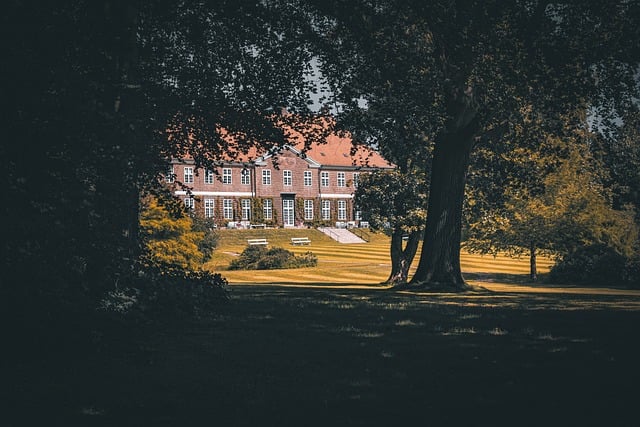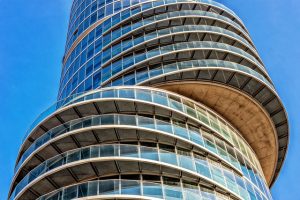Commercial property and casualty insurance is a crucial safeguard for businesses operating within commercial buildings, offering comprehensive financial protection against diverse risks including structural damage, business interruption, theft, natural disasters, and liability claims. Key components include building coverage, business interruption, and liability protection. Customized policies tailored to specific buildings' unique factors like use, location, construction, value, and potential hazards ensure robust protection. When choosing a policy, evaluate region-specific risks, asset values, and liability protection. Case studies demonstrate the effectiveness of tailored insurance strategies in swiftly recovering from disasters and protecting against cyberattacks.
In the dynamic landscape of business, safeguarding commercial buildings against unforeseen risks is paramount. This article delves into the intricacies of Property and Casualty Insurance for Commercial Buildings, offering a comprehensive guide to effective risk management. We explore essential components like understanding policy structures, identifying covered hazards, and tailoring coverage to unique facilities. Additionally, we uncover common challenges and present real-world case studies demonstrating successful implementation of commercial property risk solutions.
Understanding Commercial Property and Casualty Insurance

Commercial property and casualty insurance is a crucial component in managing risks associated with business operations housed within commercial buildings. This type of insurance provides financial protection against various perils, including fire, theft, vandalism, natural disasters, and liability claims resulting from accidents on the premises. For commercial spaces, which often house valuable assets, sensitive data, and numerous occupants, having adequate coverage is essential for maintaining business continuity and financial stability.
Property and casualty insurance for commercial buildings encompasses several key elements. It includes building coverage, which protects against physical damage or destruction, as well as business interruption coverage, compensating businesses for lost revenue during periods of temporary closure due to insured events. Additionally, liability coverage shields owners and managers from financial loss resulting from accidents, injuries, or property damage sustained by visitors or tenants. By understanding these insurance options, business owners can make informed decisions to safeguard their investments and mitigate potential risks.
Types of Risks Covered in Commercial Property Policies

Commercial property policies are designed to safeguard businesses against a wide range of risks associated with their physical assets, including buildings and structures. These insurance plans offer comprehensive coverage that goes beyond basic protection. The primary types of risks covered include natural disasters such as fire, hurricanes, and earthquakes, which can cause significant damage to commercial buildings. Property and casualty insurance for commercial buildings also protects against man-made hazards like theft, vandalism, and civil unrest.
Moreover, these policies address business interruption risks by compensating businesses for losses incurred during periods when operations must cease due to insured events. Other covered perils include lightning strikes, riots, and falling objects. Some policies even extend protection to temporary structures and personal property located on the premises. This comprehensive approach ensures that commercial property owners have robust risk mitigation solutions tailored to their specific needs.
The Importance of Customized Coverage for Commercial Buildings

In the dynamic landscape of commercial real estate, every building has unique risks and requirements. One-size-fits-all approaches to insurance often fall short in addressing these nuances. That’s where customized coverage for commercial buildings comes into play. Property and Casualty Insurance tailored to a specific property considers its use, location, construction type, value, and potential hazards – from fire and natural disasters to liability claims and business interruptions. This personalized approach ensures that the insurance policy adequately protects the building and its occupants.
A comprehensive strategy goes beyond meeting minimum legal requirements. It anticipates risks specific to the area, industry, and even the building’s age and condition. By understanding these factors, insurers can design policies that offer adequate liability protection, cover rebuilding or restoration costs in case of damage, and provide financial stability during unforeseen events. Ultimately, customized coverage translates into peace of mind for property owners and tenants alike, knowing their investment is shielded against potential losses.
Key Factors to Consider When Choosing a Policy

When selecting a property and casualty insurance policy for your commercial building, several crucial factors come into play. Firstly, assess the specific risks associated with your property, including natural disasters like earthquakes or floods, which are often region-specific. Understanding these hazards is key to choosing adequate coverage. For instance, if located in an area prone to hurricanes, comprehensive storm damage protection should be a priority.
Secondly, consider the value of your assets and potential loss scenarios. This includes not only the physical structure but also its contents, business equipment, and intellectual property. Evaluate replacement costs versus actual cash value to decide on the right coverage limits. Additionally, examine liability risks; commercial buildings often face claims related to slips and falls, product hazards, or workplace injuries. Ensure your policy provides sufficient liability protection to safeguard your business against financial losses.
Common Challenges in Commercial Property Risk Management

In the dynamic landscape of commercial property risk management, businesses face a multitude of challenges that demand proactive solutions. One of the primary hurdles is assessing and mitigating risks associated with rapidly changing market conditions and environmental factors. Commercial buildings are complex assets, exposed to various perils such as natural disasters, fires, and vandalism, among others. Effective risk management requires a comprehensive understanding of these threats and their potential impact on the property and its occupants.
Moreover, staying abreast of evolving regulations and legal requirements is essential for maintaining compliance and minimizing liability risks. Property and Casualty Insurance for Commercial Buildings plays a pivotal role in safeguarding businesses from financial losses. It offers tailored coverage options that address specific concerns like business interruption, property damage, and liability claims, providing a safety net during unforeseen circumstances. However, choosing the right insurance policy requires careful analysis to ensure it aligns with the unique needs of each commercial entity.
Case Studies: Successful Implementation of Commercial Property Risk Solutions

The successful implementation of commercial property risk solutions has been demonstrated through various case studies, highlighting the significant benefits of tailored insurance strategies for commercial buildings. One notable example involves a large retail complex that experienced substantial damage due to natural disasters, such as earthquakes and hurricanes. By implementing a comprehensive risk management plan, the property owners were able to secure Property and Casualty Insurance for Commercial Buildings, covering not only the physical structure but also inventory, business interruption, and extra expense losses. This proactive approach ensured swift recovery and minimal downtime, demonstrating the crucial role of insurance in mitigating financial risks.
Another successful case involves an office tower that faced challenges with cyberattacks, leading to data breaches and operational disruptions. The building management team collaborated with risk specialists to design an innovative solution, combining traditional Property and Casualty Insurance with advanced cyber liability coverage. This dual-pronged approach not only protected the physical assets but also safeguarded sensitive data, demonstrating how customized insurance plans can address emerging risks in today’s digital landscape.
